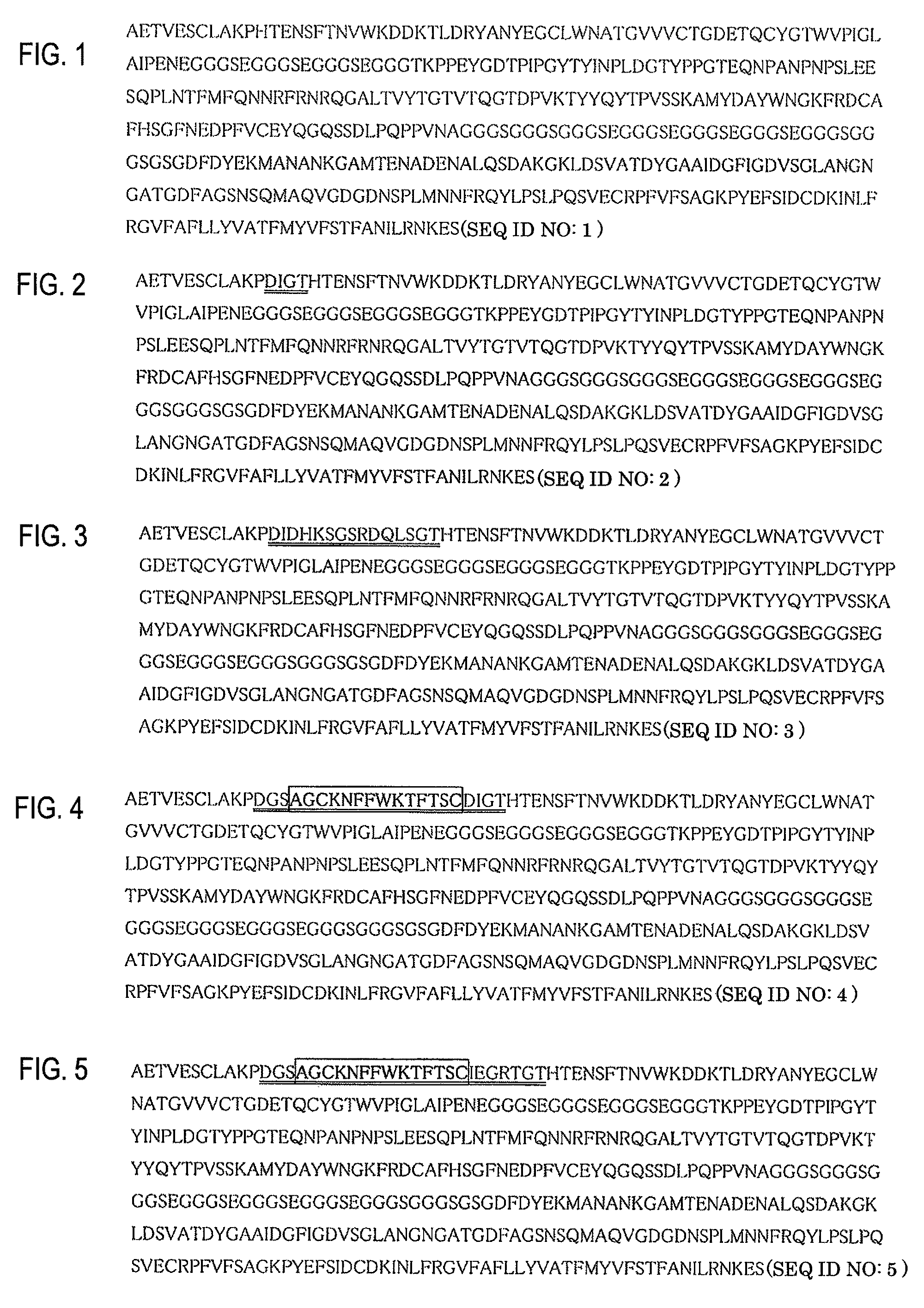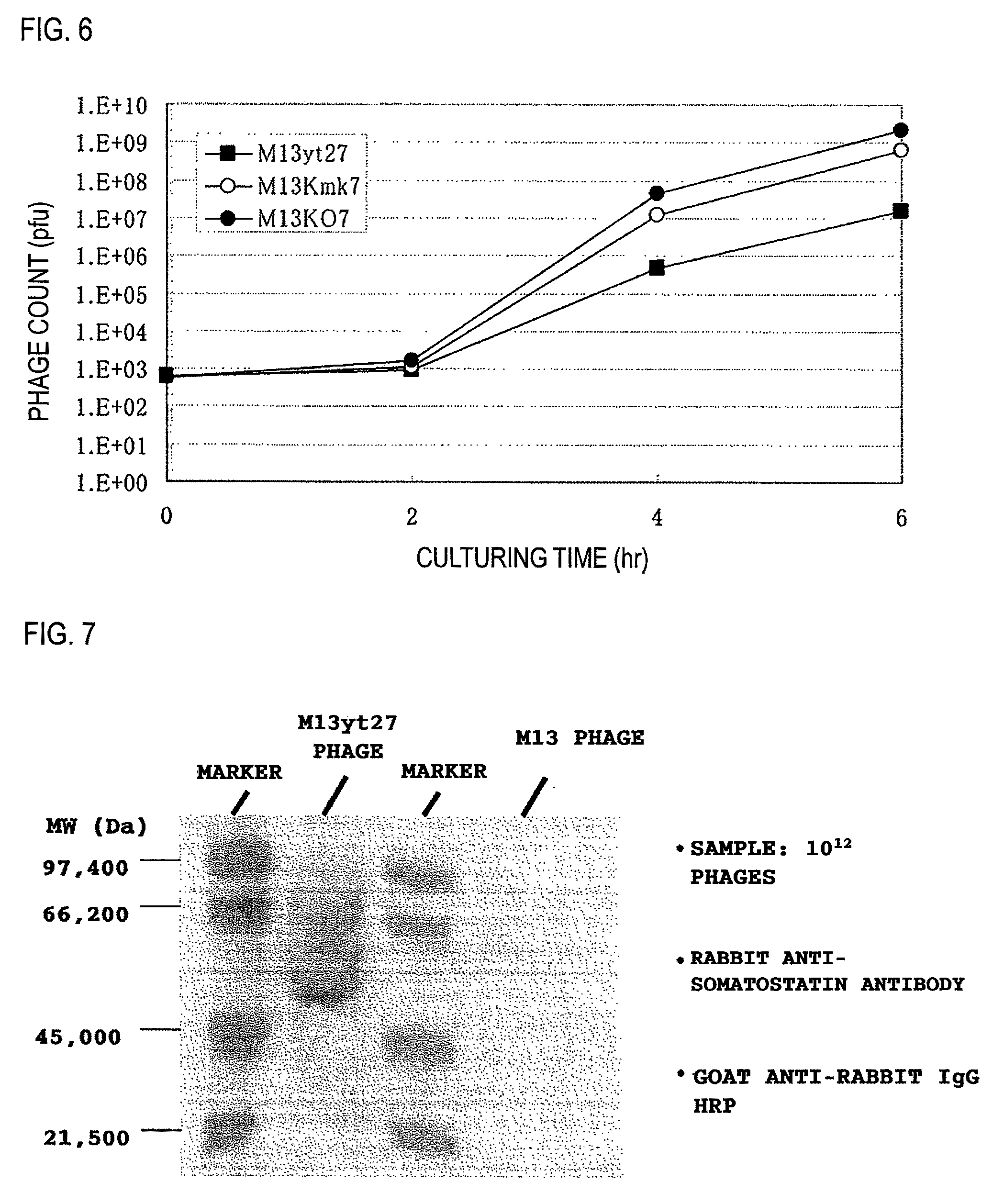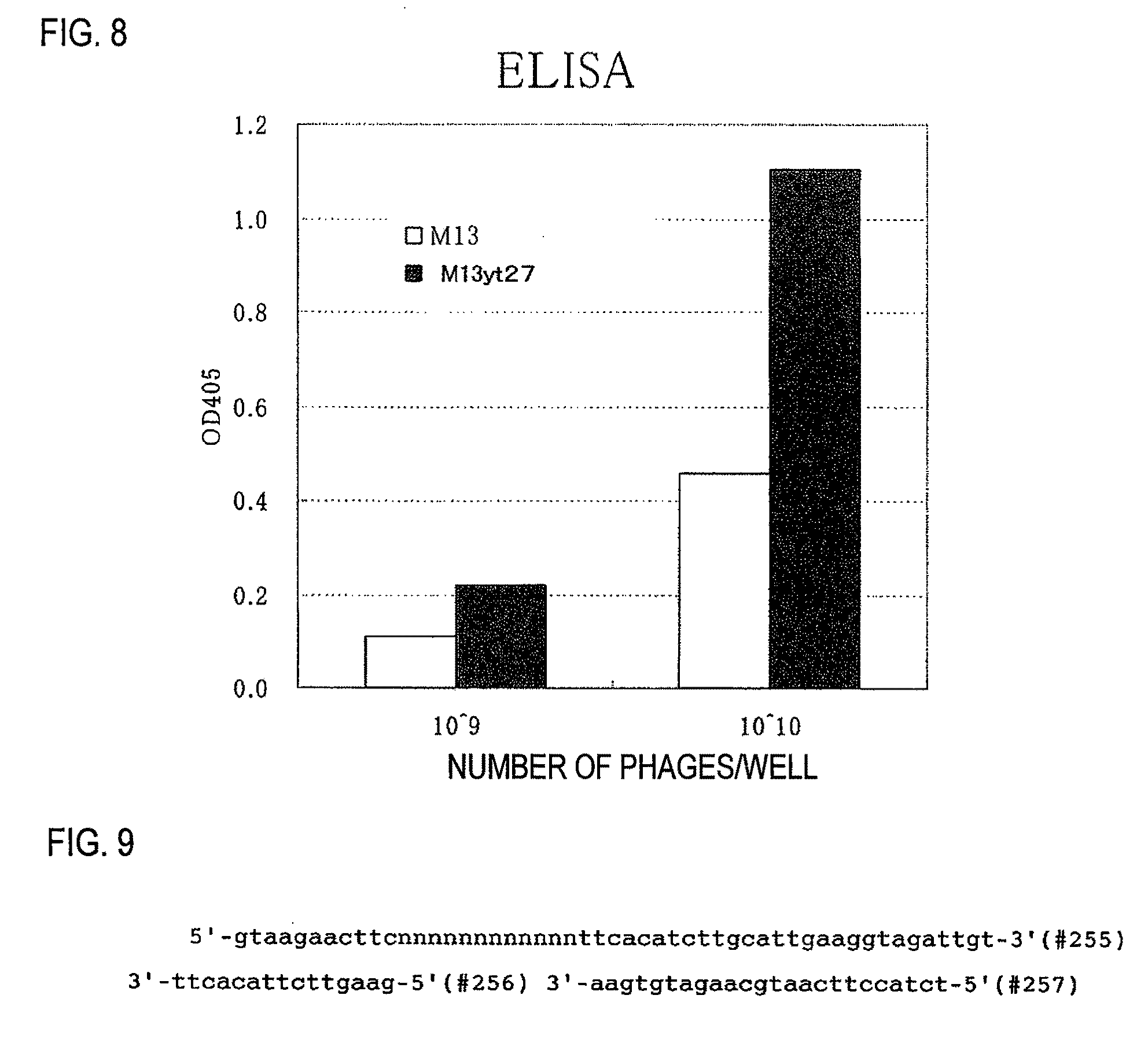Phage Display By Novel Filamentous Bacteriophage
a filamentous bacteriophage and phage technology, applied in the field of new phage vectors and phage display methods, can solve the problems of extremely difficult to produce mutants while retaining this function, and achieve the effect of efficient production of random peptides
- Summary
- Abstract
- Description
- Claims
- Application Information
AI Technical Summary
Benefits of technology
Problems solved by technology
Method used
Image
Examples
example 1
DNA Protocols Used in the Present Specification
[0094]Unless noted otherwise in the specification, the following protocols were used in carrying out the experiments. The culturing of M13 phages, the preparation of M13 phages, the extraction of DNA from E. coli and the M13 phages, enzyme reactions using DNA and oligonucleotides, and the transformation of E. coli were all carried out in accordance with the manufacturer's protocols for the materials used. In the absence of manufacturer's protocols, the protocols described in Molecular Cloning: A Laboratory Manual (Cold Spring Harbor Laboratory Press) were followed.
[0095]DNA base sequence determinations were carried out with special-purpose kit reagents using an ALF DNA sequencer (Amersham Bioscience) or an Open Gene DNA sequencer.
[0096]The oligonucleotides were custom synthesized by Greiner Japan KK and Genenet Co., Ltd. Base sequences for each oligonucleotide are shown in FIG. 14. The symbol # indicates the oligonucleotide number.
example 2
Construction of the Vector M13yt6 for Expressing Random
[0097]Peptides in a Filamentous Bacteriophage Using the single-stranded DNA (abbreviated below as “ssDNA”) of the M13KO7 phage, the oligonucleotide #186 shown in FIG. 14, and a Mutant K kit (Takara 6060; Takara Bio), mutation was carried out in vitro in accordance with the kit protocol. A phage solution, RF DNA and ssDNA were prepared from single plaques obtained by transformation. Restriction enzyme cleavage of the RF DNA at KpnI or EcoRV resulted in the identification of 8.7 Kb DNA fragments in each case. Restriction enzyme cleavage at two places, i.e., KpnI and HindIII or EcoRV and HindIII, resulted in the identification of DNA fragments of 5.7 Kb and 3.0 Kb in each case. In addition, the DNA base sequence at the mutation site in ssDNA was determined, and the M13yt6 phage thereby identified.
example 3
Preparation of M13yt6 Vector DNA Fragments Double-Cleaved by Restriction Enzymes EcoRv and KpnI
[0098]The M13yt6 vector was cleaved by the restriction enzyme EcoRV (Takara Bio), then cleaved by the restriction enzyme KpnI (Takara Bio). The resulting 8.7 Kb EcoRV-KpnI double-cleaved DNA fragments were isolated by electrophoresis using 0.8% agarose gel, following which the DNA fragments were collected from the agarose gel. The concentration of the collected DNA was determined by comparing the degree of color development induced by 0.5 μg / ml of ethidium bromide with that of control DNA (λ HindIII marker: TOYOBO).
PUM
| Property | Measurement | Unit |
|---|---|---|
| concentration | aaaaa | aaaaa |
| temperature | aaaaa | aaaaa |
| temperature | aaaaa | aaaaa |
Abstract
Description
Claims
Application Information
 Login to View More
Login to View More - R&D
- Intellectual Property
- Life Sciences
- Materials
- Tech Scout
- Unparalleled Data Quality
- Higher Quality Content
- 60% Fewer Hallucinations
Browse by: Latest US Patents, China's latest patents, Technical Efficacy Thesaurus, Application Domain, Technology Topic, Popular Technical Reports.
© 2025 PatSnap. All rights reserved.Legal|Privacy policy|Modern Slavery Act Transparency Statement|Sitemap|About US| Contact US: help@patsnap.com



